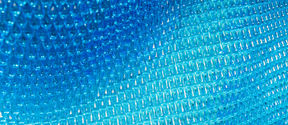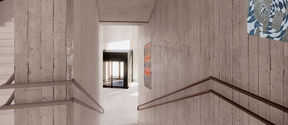Public art collections at Aalto University
The aim of public art across Aalto is to create a vibrant environment for experiencing the world through various perspectives and for embracing imagination, intuition, and exploration.

The purpose of the public art in the Marsio building is to embrace science and art. Art creates an imaginative environment for study and work and simply encourages wonder. When we share the same experience with others, our brains synchronize with others and we share imagination together. Perhaps we think that imagination is only for children, but sharing imagination is an essential skill for collaboration, creating new things, understanding, play, and social interaction.

The purpose of the art collection is to encourage viewers to explore and take a moment to pause in the midst of their busy lives. Perhaps to ask: How does art influence the way you think? Does it make you happy? Does art make you cry or get annoyed? Does art evoke any memories? Why? How?
Laura Könönen's stone sculptures were selected for installation in front of the building (2025). The second and third-floor studios and workspaces feature a curated collection of photography by six artists: Wilma Hurskainen, Noora Sandgren, Jari Silomäki, Maija Tammi, Saana Wang, and Sheung Yin.
In the main staircase of the building, there is a site-specific assembly of five paintings by Maija Luutonen called Enta, which challenges our memory capacity as we move up the stairs. The artist Luutonen has long dealt with the relationship between memory and forgetting in relation to looking, recognizing, and repeating. The Enta artwork consists of several different image surfaces, like detached memories from which the viewer creates their own comprehensive whole. The inspiration for the work came from Luutonen's interest in brain research at Aalto University.

The artist has painted a series of paintings on fiber concrete panels, and the basic material is also visible in each painting. According to the artist, the paintings contain many recognizable things as well as things that cannot be fully recognized. It is possible that "Enta" will appear differently to a one-time visitor to the Marsio building than to someone who frequents the building daily. The paintings are hung in three floors of Marsio and placed so that the viewer can see the painting from multiple points. It is not possible to see all the paintings at the same time, so the viewer must rely on their memory.
More information
Outi Turpeinen, Manager, art and exhibitions
[email protected], tel. +358 50 431 4194
In 2017, Aalto University decided to comply with a one per cent art principle in its building projects. The one per cent art principle was first applied to the Radical Nature art concept in Aalto University’s main building, Dipoli.
The vision of public art at Aalto University is to address and raise questions about what it is to be a university, what we do together in society, and what constitutes the public. Public art is site-specific and connects with the diversity of the university and its post-disciplinary communities. Public artworks reflect this diversity through different art forms, materials, techniques and traditions.

The aim of public art across Aalto is to create a vibrant environment for experiencing the world through various perspectives and for embracing imagination, intuition, and exploration.

Marsio, the campus open-to-all meeting place, will open its doors in September 2024.

The themes, artists and drafts of the new buildings' art collections were published